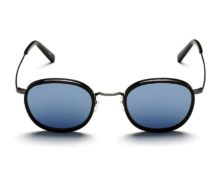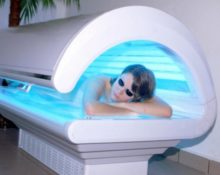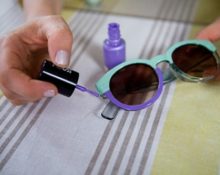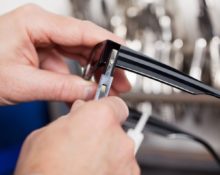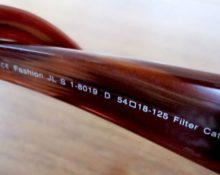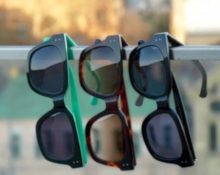Edwin Herbert not only founded the Polaroid company, but according to one version, he invented polarized glasses. According to another theory, he only improved someone else's idea. We are not able to judge history, but we can enjoy its fruits - reliable and eye-healthy accessories like Polaroid.
How are Polaroids different from regular sunglasses?
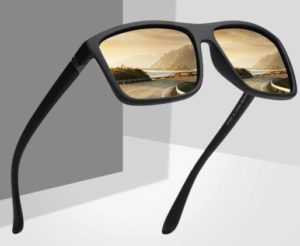 Regular sunscreens either work through tinted or colored lenses or through ultraviolet protection. Simply darkened or colored lenses do not protect the eyes, but only transform the perception of the picture. For example, yellow glass enhances contrast. UV filter is much better than regular lenses. It no longer just helps to perceive the world around us, but also protects the organs of vision from harmful rays and helps to avoid their rapid overstrain.
Regular sunscreens either work through tinted or colored lenses or through ultraviolet protection. Simply darkened or colored lenses do not protect the eyes, but only transform the perception of the picture. For example, yellow glass enhances contrast. UV filter is much better than regular lenses. It no longer just helps to perceive the world around us, but also protects the organs of vision from harmful rays and helps to avoid their rapid overstrain.
Polaroid glasses are an even more useful device. They work due to a polarizing filter that does not transmit horizontal light waves, which are optical interference. Due to this, it becomes possible to examine surrounding objects:
- during bright sun, fog, twilight;
- shiny and iridescent (for example, only fallen snow in the bright sun stops blinding);
- located on the water.
Important! Polarized glasses are less effective when the sun is at its zenith.
Polarized glasses can be additionally equipped with a UV filter. This combination provides the highest level of eye protection and comfort, because Polaroid itself blocks only 50–70% of ultraviolet radiation and requires an additional deterrent. Original Polaroid products are necessarily UV resistant. It doesn’t hurt to make sure that such a function is available if you want to buy something that is not a fake.
How do you know that you are buying an original?
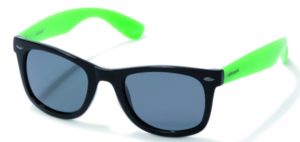 At the beginning check polarization. To do this, take a smartphone with an LCD screen, turn it on and hold the glasses to the display, and then turn them 90 degrees. Through regular lenses, you will be able to see the image on the display in both positions of the accessory, but polarized lenses will darken before or after they are rotated and will no longer show the image.
At the beginning check polarization. To do this, take a smartphone with an LCD screen, turn it on and hold the glasses to the display, and then turn them 90 degrees. Through regular lenses, you will be able to see the image on the display in both positions of the accessory, but polarized lenses will darken before or after they are rotated and will no longer show the image.
Important! If you don’t have a smartphone at hand, ask the seller for test strips. Their absence should alert you, but it’s too early to refuse the purchase. You just need to hold the glasses up to the LCD monitor of your computer or commercial equipment, and then turn the frames 90 degrees. This manipulation will darken the original lenses.
The presence of UV rays is checked differently, using a spectrometer. The device is available in opticians and stores specializing in the sale of sunglasses - in other words, it is everywhere you should look for original Polaroids. You just need to ask the seller to provide access to the device. If the glass has ultraviolet protection, it will show UV400. UV380 is acceptable, but less desirable. Such a pair will cope with the task, but still not as effectively as we would like.
After checking the lens specifications, proceed to study the product packaging. Guidelines that will help confirm the originality of Polaroid:
 Passport. Laminated, has a Russian-language section. On the last page there is information about compliance with European quality criteria, barcode, model identification number. The last one, don’t be lazy, check it on the manufacturer’s official website. Manufacturers of counterfeits often indicate non-existent articles.
Passport. Laminated, has a Russian-language section. On the last page there is information about compliance with European quality criteria, barcode, model identification number. The last one, don’t be lazy, check it on the manufacturer’s official website. Manufacturers of counterfeits often indicate non-existent articles.- Package. Can be hard or fabric. In the latter case, there is a regular cloth bag. Both packages must have the manufacturer's logo.
- The final step is to consider the arms. The right one should have an engraving (the brand name is placed on the outside) and an indication of the model, lens type, and light protection density (the inscription is on the back inside of the left temple).
Tips for choosing polarized glasses
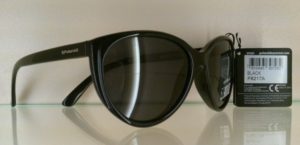 Evaluate the appearance of the product. Even if the Polaroid glasses you are considering are not originals, for visual safety and long service life they must have a “soldered-in” polarizing filter (placed inside). If the protection is of an external type - the lenses are simply covered with film - there will be no benefit from such an accessory.
Evaluate the appearance of the product. Even if the Polaroid glasses you are considering are not originals, for visual safety and long service life they must have a “soldered-in” polarizing filter (placed inside). If the protection is of an external type - the lenses are simply covered with film - there will be no benefit from such an accessory.
Well don't try to save money. Average cost of a pair of Polariod glasses: $60-$100. If the price tag is 40–70% lower than this guideline, then you don’t even have to hope for the original.


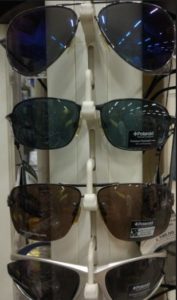
 0
0